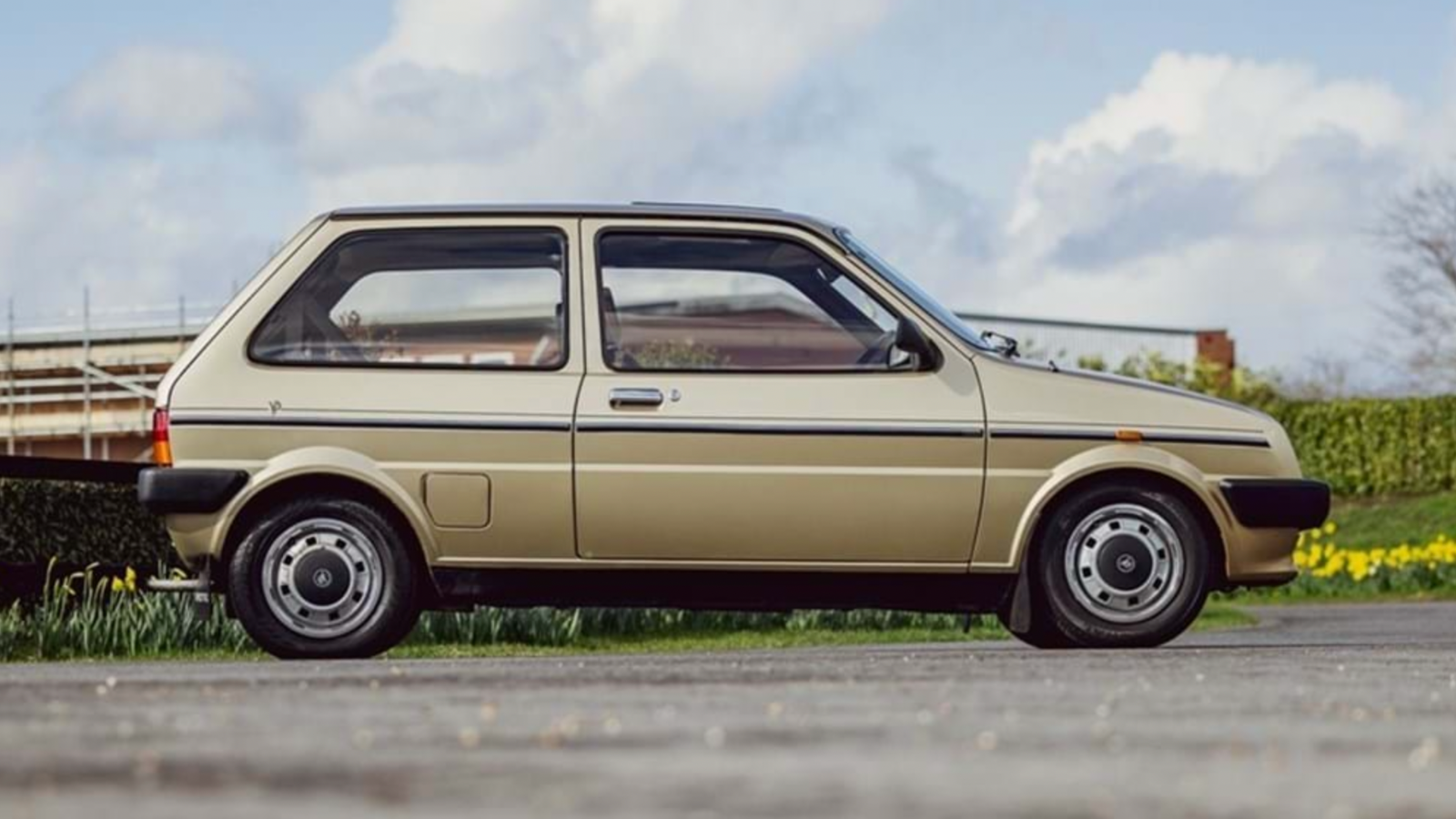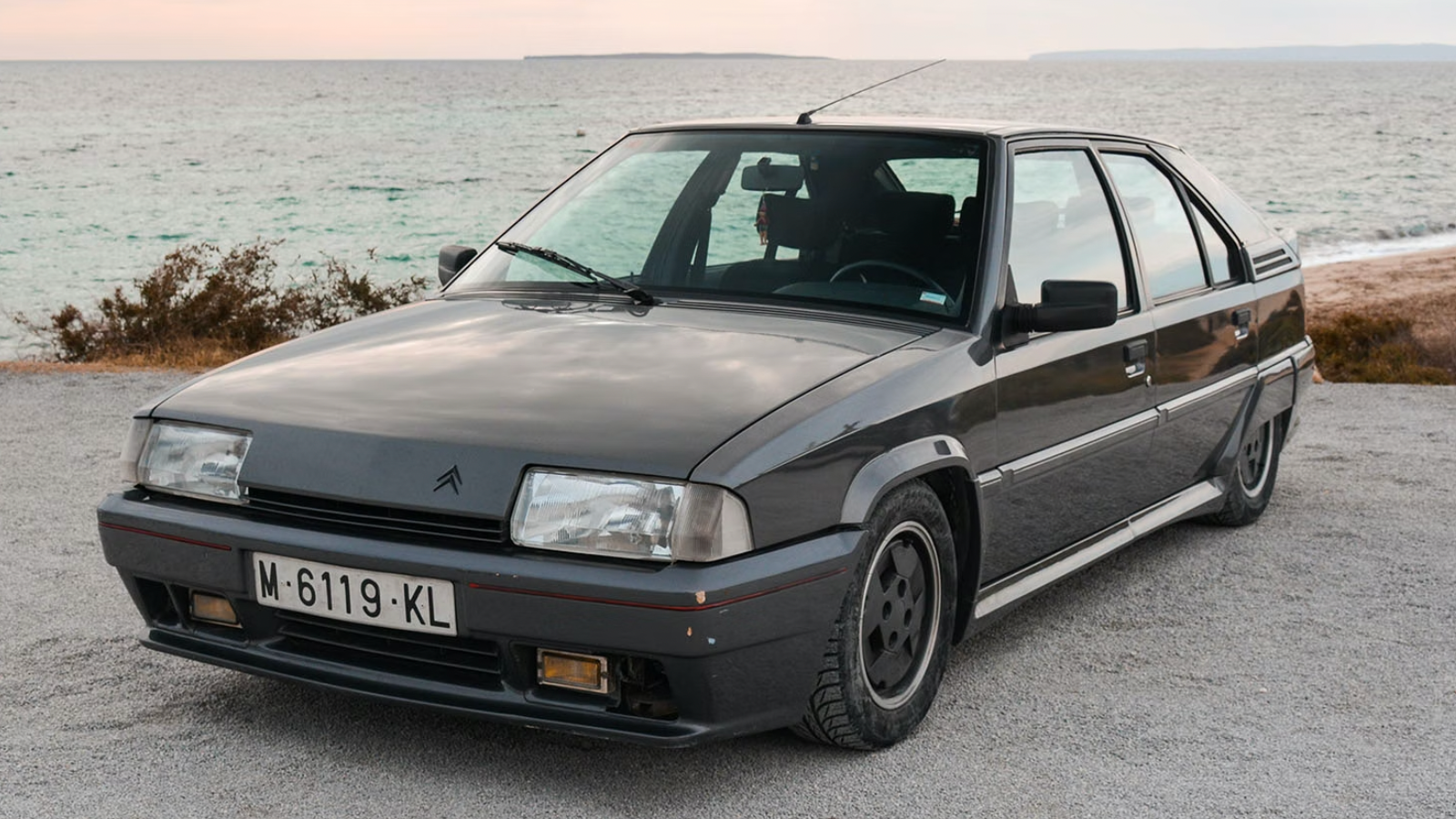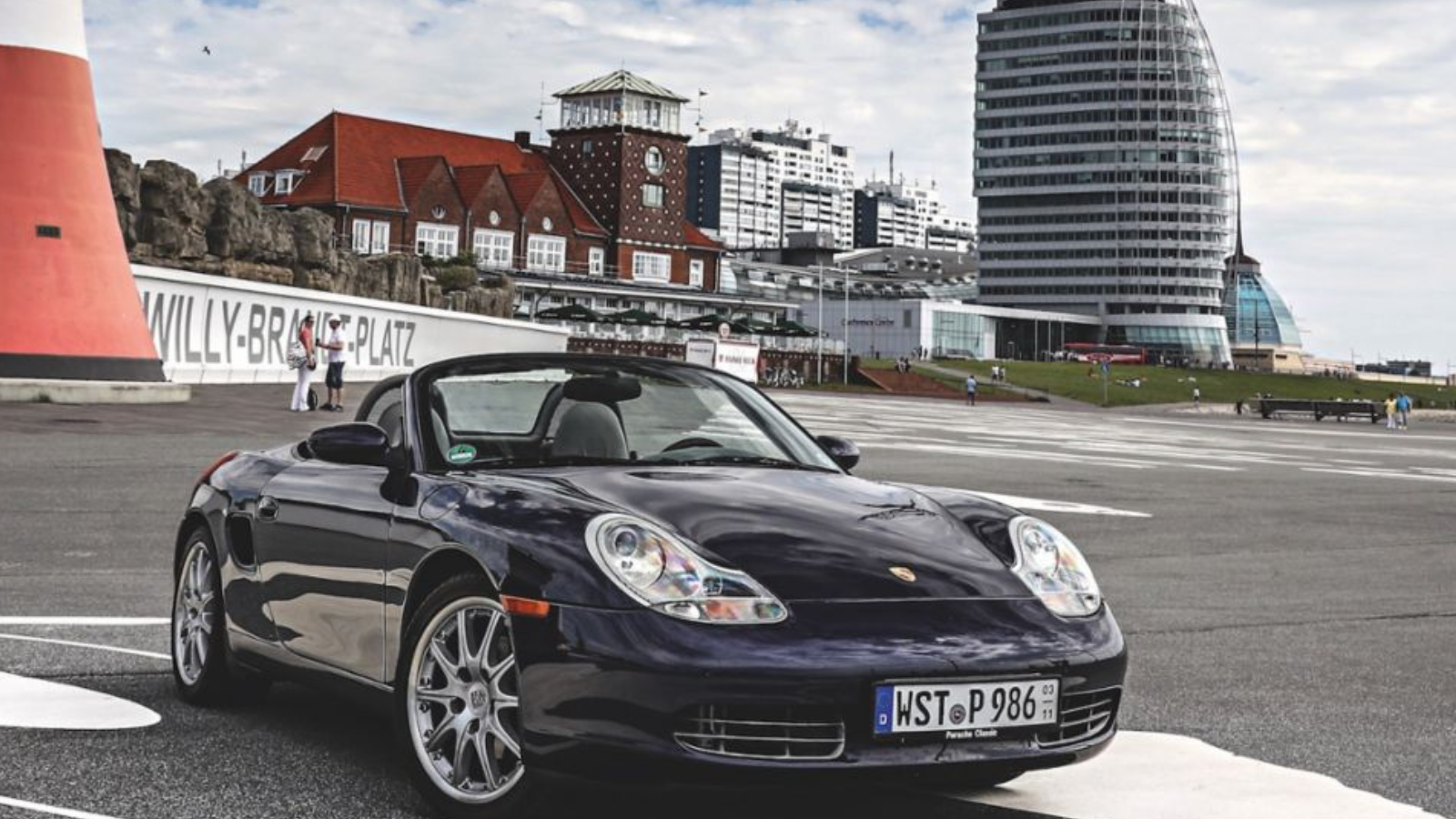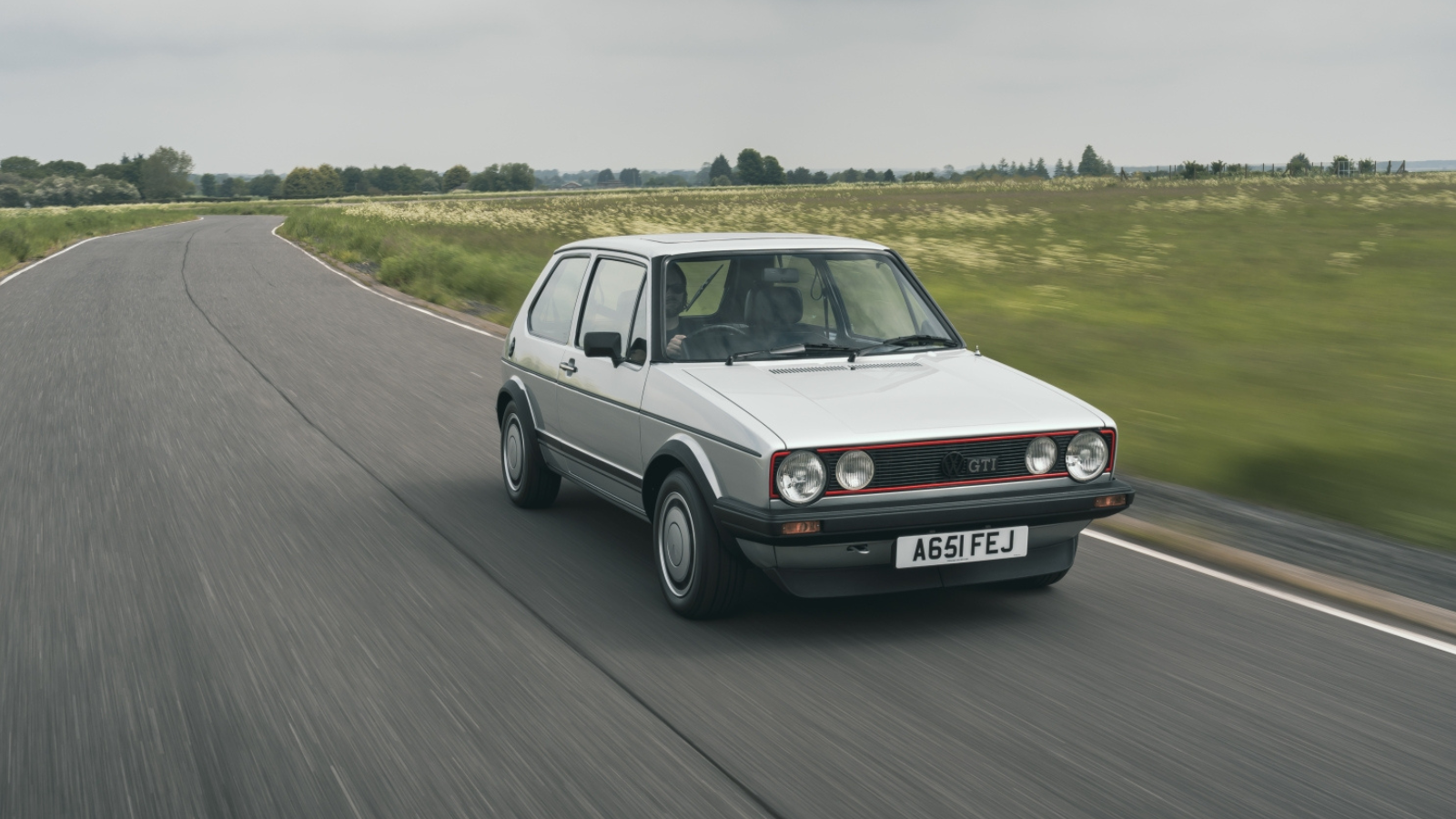-
 © Tony Baker/Classic & Sports Car
© Tony Baker/Classic & Sports Car -
 © Silverstone Auctions
© Silverstone Auctions -
 © Silverstone Auctions
© Silverstone Auctions -
 © Historics Auctioneers
© Historics Auctioneers -
 © Historics Auctioneers
© Historics Auctioneers -
 © Historics Auctioneers
© Historics Auctioneers -
 © Historics Auctioneers
© Historics Auctioneers -
 © BMW
© BMW -
 © BMW
© BMW -
 © Collecting Cars
© Collecting Cars -
 © Collecting Cars
© Collecting Cars -
 © Lamborghini
© Lamborghini -
 © Lamborghini
© Lamborghini -
 © Lotus
© Lotus -
 © Lotus
© Lotus -
 © Mercedes-Benz
© Mercedes-Benz -
 © Mercedes-Benz
© Mercedes-Benz -
 © Peugeot
© Peugeot -
 © Peugeot
© Peugeot -
 © Porsche
© Porsche -
 © Porsche
© Porsche -
 © Volkswagen
© Volkswagen -
 © Volkswagen
© Volkswagen -
 © Volvo
© Volvo -
 © Volvo
© Volvo
-
12 times auto makers turned it round in the face of adversity
Sink or swim, make or break, all or nothing – no matter how we phrase it, most car makers have found themselves badly needing a fresh new model to avert disaster at some point in their history.
Sometimes that’s because they’re simply running out of cash following years of dwindling sales and/or over-expenditure, sometimes it’s because new owners have invested heavily spying potential but are impatient to see results (or else!) after years of mediocrity, and sometimes it’s because an iconic model has soldiered on too long and no-one has a clue how to replace it.
Either way, listed in alphabetical order, here are 12 cars that helped save their makers from extinction.
-
1. Aston Martin DB7
Okay, so Ford taking a 75% stake (later 100%) in Aston Martin in 1987 was the real key to the company’s survival, Aston having sold just 20,000 cars or so over the previous two decades, but Ford needed a return on its investment and therefore a car to sell in significant numbers. Enter the DB7.
Its story actually goes back to Jaguar (bought by Ford in 1989) developing a stillborn replacement for the XJS (its first go at the F-type), with an Ian Callum design and Tom Walkinshaw Racing engineering know-how.
When Jaguar management canned that project, Walkinshaw took the bones to Aston; freshly installed CEO Walter Hayes liked it and the rest is history.
-
Aston Martin DB7 (cont.)
Ian Callum redesigned the DB7 from his earlier Jaguar concept, while the Jaguar-derived 3.2-liter supercharged straight-six was fitted.
Assembled at Bloxham in Oxfordshire (just like the XJ220 whose production TWR also managed), the DB7 made its debut at Geneva in 1993 (and was displayed outside Goodwood House at the inaugural Festival of Speed that summer). A V12 version and Volante convertible later joined the line-up.
By the time production ceased in 2004, 7000 DB7s had been produced – more than any previous Aston. The story went full circle when Jaguar evolved the 2006 XK from DB7 hand-me-downs, too.
-
2. Austin Metro
The British government had already rescued British Leyland following its collapse in the mid-1970s, and then ploughed £275m into turning the company round with the new Metro and an upgrade for the Longbridge production plant.
So the Austin Metro had to deliver, and it did so from its unveiling in 1980, despite extensive industrial action threatening to scupper it.
Initially intended as a replacement for the Mini, later sold alongside it to rival new hatchbacks including the Fiesta, Polo and Renault 5, the Mini Metro (as it was first known) was designed by Harris Mann under David Bache, and featured numerous Mini parts-bin carryovers – not least its A-series engines, albeit upgraded to A-Plus guise in both 998cc and 1275cc capacities.
-
Austin Metro (cont.)
Diana, Princess of Wales, nipped about town in one (before switching allegiance to Mk3 Escorts), helping to boost the Metro’s profile, and around 2500 a week rolled out of Longbridge during a 10-year production run that saw more than a million Metros produced in total – before a new Metro arrived using much of its predecessor’s warmed-up leftovers.
There were hot versions, too. First was the MG Metro in 1982, just two years since the MGB left production, and later the MG Turbo developed with a little help from Lotus
Wildest of all was the 6R4, a four-wheel-drive Group B rally car with a mid-mounted V6 and Williams Formula One magic.
-
3. Bentley Continental GT
When Volkswagen took control of Bentley from Vickers in 1998, total vehicle deliveries for the year stood at just 414 units. In fact, Bentley had produced fewer than 40,000 cars in total since WO founded the luxury British maker back in 1919.
Then came the Continental GT in 2003 – a more affordable, non-coachbuilt model, but one that was still produced at Crewe following a £1bn overhaul.
The Conti featured a sleek new design by Raul Pires and Dirk van Braeckel, a potent W12 twin-turbo engine with 560HP and permanent all-wheel drive.
-
Bentley Continental GT (cont.)
At £90,000 new it was still out of reach for most, but it was also half the price of the Continental R and at that point slotted into a bit of fresh air in the market.
Premiership soccer players loved the Continental, but presumably those from lesser divisions lapped it up, too, because by 2005 Bentley sales had risen 2083% to a staggering 8627 units, giving the company more stability than… well, ever.
Production continued until 2011, with derivatives including the four-door Flying Spur and GTC convertible, and the GT’s engineering even fed into the Volkswagen Phaeton and the Bugatti Veyron (with its W16 quad-turbo engine).
Plus, when it was replaced, its second-generation Continental GT successor was very much an evolution of the original. Bentley’s saviour and no mistake.
-
4. BMW 700
If it wasn’t for the BMW 700, the Bavarians might be speaking with a Stuttgart accent these days, because this affordable rear-engined model actually help prevent a takeover by Mercedes-Benz during the turbulent late 1950s.
There’s no question it’s one of the most significant cars in BMW’s history.
Launched in 1959 as both a coupe and sedan, the 700 was engineered around BMW’s first steel monocoque chassis, featured styling by Michelotti and mounted a flat-twin 697cc engine at the rear of car, hence the lack of trademark kidney grilles and the rounded-up numerical name.
-
BMW 700 (cont.)
The unsuccessful BMW 600 (basically an extended bubble car with a door hinged at the front) supplied some hardware, including its swing-arm suspension, four-speed transmission and engine – 35,000 examples were built in 1960 alone.
Despite boasting just 30HP, the 700 proved successful in hillclimbing, too, thanks to a dry weight of less than 600kg (c1320LB), a compact 3540mm overall length and a rear engine to get it off the line – in 1960 Hans Stuck Snr clinched the German hillclimbing championship in one, aged 60.
A hotter 700 Sport turned up the wick, too, to a heady 39HP.
-
5. Citroën BX
Produced from 1982 to 1993, the Citroën BX was the first fruits of the freshly minted PSA group – aka the Peugeot takeover – and is widely credited as the model that saved Citroën from bankruptcy.
But while the BX traded mechanical innovation for a rummage in the Peugeot parts-bin, the design, by Bertone, was still idiosyncratically and brilliant Citroën with lines like folded cardboard, some panels made from plastic, and bodywork shrouding the rear wheels like a ’30s streamliner.
And this when Ford had just launched its bland, jelly-mold Sierra.
-
Citroën BX (cont.)
The quirkiness continued inside with a drum speedometer, a digital strip for a tachometer and satellite control pods, wackiness later toned down for the Mk2 that introduced analog dials.
Plus, while gasoline and turbodiesel engines were shared with parent Peugeot, Citroën at least got to keep its hydraulic suspension.
Counting both hatchback and station wagon variants, more than 2.5m BXs were produced over the 11-year production run.
You’d never guess given their scarcity today, but those that remain have an active support base.
-
6. Lamborghini Gallardo
Lamborghini had been passed between owners like a parcel at a children’s birthday before the music stopped with the Volkswagen Group holding tight in 1998, the same year it acquired Bentley, bringing much-needed financial stability.
The Murciélago actually came first, but the V12 supercar was very much old-school Lambo and sold in lower numbers (albeit at a much higher price).
The V10 Gallardo that followed in 2003 was the car that really repaid Volkswagen’s investment and safeguarded Lamborghini’s future.
-
Lamborghini Gallardo (cont.)
A sizeable step forward beyond the Murciélago, the Gallardo was a more affordable model that combined the best of Lamborghini with good-old Germanic objectivity, like Volkswagen had polished a rough diamond.
But boy that V10 engine was exciting, producing 500HP from 5.0 liters initially, up to 570HP and 5.2 liters ultimately, and switching from an even to uneven firing order when the Gallardo was facelifted in 2008.
A whisker over 14,000 Gallardos were produced at Sant’Agata over a decade-long innings, and in all manner of variants – six-speed manual or paddleshift automated manual, all-wheel drive or rear-wheel drive, and either coupe or Spyder.
-
7. Lotus Elise
After the stability of the Toyota years, Lotus was back in the small-time by 1993, as the Japanese sold out to Romano Artioli, also owner of Bugatti (which didn’t end well).
With no big OEM to back it up, Lotus needed to reinvigorate its aging line-up.
The brilliant Elise was the rather brilliant answer. Named after Artioli’s granddaughter Elisa, it channeled the auto maker’s roots as a builder of lightweight, no-frills rear-drive sports cars and featured an extruded aluminum chassis, fiberglass bodywork and – initially at least – a 1.8-liter Rover K-series engine.
-
Lotus Elise (cont.)
The Lotus Elise made its debut at the Frankfurt show in 1995 and 12,000 units were sold until 2001 – when it was replaced by the closely related Elise Mk2.
The car’s potential no doubt convinced Proton to buy Lotus from Artioli in 1996, too.
The Elise’s extruded aluminum construction went on to underpin the closely related Exige (more than an Elise with a roof, but that’s the nub of it), and later the Evora and even the more recent Emira.
-
8. Mercedes-Benz 300SL
With only 1400 units sold from August 1954 to May 1957, the Mercedes-Benz 300SL was no mass-production model to fill the Merc coffers with cash and avert catastrophe, but it did play a pivotal role in the German company’s long-term health.
In fact, when US importer Max Hoffmann first pitched the concept to the Mercedes board, he described it as crucial for Mercedes’ survival in the US.
The logic ran that such a car would help balance Merc’s image as a maker of rather conservative sedans and inject a little more panache. Hoffmann was proved correct.
-
Mercedes-Benz 300SL (cont.)
The W198 SL was born out of its race-bred sibling, the W194, with its spaceframe construction, swing-axle suspension and 3.0-liter straight-six engine.
In fact, just five months after Hoffmann convinced the Mercedes board to green-light the project in September 1953, the SL made its debut at the New York International Motor Sports Show, held in February 1954, wowing crowds with its novel ‘gullwing’ doors (a necessity due to the spaceframe’s structural bracing of the sills, which was incompatible with conventional doors).
More refined than the racing car, both in engineering and design, the SL added direct fuel injection to the six-cylinder engine and used a combination of steel body and hinged aluminum panels.
With 215HP and up to 156mph flat out, depending on the final-drive ratio chosen, the SL was the fastest production car of its day. Its role in transforming Mercedes’ image should not be underestimated.
-
9. Peugeot 205
Peugeot had overstretched itself by the late 1970s, having snapped up Citroën and later Chrysler Europe, and badly needed a highly profitable volume model; the 205 proved just the ticket.
Pet project of Peugeot board member Jean Boillot, the front-wheel-drive 205’s effortlessly stylish and classless lines were designed by a team under Gerard Welter, leader of Peugeot’s own studio that beat out competition from long-time collaborators Pininfarina.
Its interior was the work of Paul Bracq, then also of the Peugeot parish, previously of BMW and Mercedes.
-
Peugeot 205 (cont.)
Spacious, fun to drive, stylish and economical, there was a 205 for everyone – three doors, five doors and two-door convertibles (the latter actually designed by Pininfarina), gasolines and diesels, manuals and autos.
It was the best-driving hot hatch of the 1980s, too, most famously as the GTI in 1.6 and 1.9-liter guises, but also as the insurance-friendly XS, bare-bones Rallye and the T16 Group B rally, a mid-engined monster that won the World Rally Championship in 1985 and ’86 and was also available for the road.
An incredible 5,278,050 examples were produced over 15 years. No question the 205 turned things around for Peugeot.
-
10. Porsche Boxster
Porsche was in a parlous state by 1989, when sales had slipped from around 40,000 units annually to 15,000, and by the mid 1990s it had just one model in its line-up – the 993-era 911.
It needed to cut costs while boosting production and profitability.
The Boxster was the answer, a mid-engined model conceived in tandem with the 996-era 911 that would follow hot on its heels and usher in the biggest shift in the 911’s lifetime to date.
-
Porsche Boxster (cont.)
The two cars shared 50% of parts, including the majority of everything forward of the B-pillar inside and out.
Even the engines are largely similar. Porsche originally approached Audi to design a four-cylinder unit, but decided to twin the M96 flat-six with the 911, turning it through 180 degrees, reducing capacity and performance instead.
The ploy worked, and when the first-gen 986 Boxster went on sale in 1996, it quickly racked up 20,000 annual sales, eventually shifting 164,874 units through to 2004.
-
11. Volkswagen Golf Mk1
Volkswagen had been experimenting with Beetle replacements for two whole decades before the Mk1 Golf came along, though most of its attempts couldn’t see past the Beetle’s rear-mounted, air-cooled engine and rear-wheel drive, and none made production. VW unwisely kicked a replacement into the long grass.
By the late 1960s VW sales were stalling as rivals launched more modern front-wheel-drive/front-engined family transport, imports to the US hit trouble, and by 1974 the whole enterprise was loss making.
The Mk1 Golf turned all that round when it arrived that same year.
-
Volkswagen Golf Mk1 (cont.)
Designed by Giugiaro, it followed rivals by using water-cooled four-cylinder engines mounted ahead of the driver to power the front wheels, freeing up space for a flexible hatchback at the rear.
Suspension was by MacPherson struts at the front, torsion beam at the rear – much of the expertise tapped from Auto Union, acquired by VW in 1964, and first used in a production VW with the Passat.
In 2007 VW announced it had shifted 25m units of the Golf, eclipsing the 21,517,415 Beetles sold. Today that figure stands at more than 35 million, with a dynasty stretching through eight generations and almost 50 years (thankfully with way more development than the Beetle ever enjoyed).
-
12. Volvo 760 GLE
Even Volvo credits the 1982 760 GLE as ‘the car that actually saved Volvo… and paved the way to the modern company of today’.
Initial work began in 1975 against the backdrop of the oil crisis, problems with the 240’s build quality and prohibitive build costs at Volvo’s Torslanda factory.
While a few different concepts were in contention, the new car’s targets were defined and prioritized as reliability, good gas mileage, longevity, low noise levels, design and finally performance.
Which does a pretty good job of summarizing the 760.
-
Volvo 760 GLE (cont.)
Designed by Jan Wilsgaard as a station wagon and a sedan, the 760’s boxy lines were both affordable to productionize and provided generous interior space.
Underneath, much was carried over from the 200-series including rear-wheel drive, but the 760 was shorter overall despite a 10cm longer wheelbase, plus it was 100kg (c220LB) lighter.
A four-cylinder turbo, 2.8-liter V6 or VW-built six-cylinder turbodiesel were offered. The more affordable, if closely related, 740 followed two years after launch.
In the US, its biggest market, 221,309 examples of the 760 were produced (the number rising to 1,230,704 with the related 740), through to 1992 – but the 760 DNA lived on until the V90 left production in 1998.
